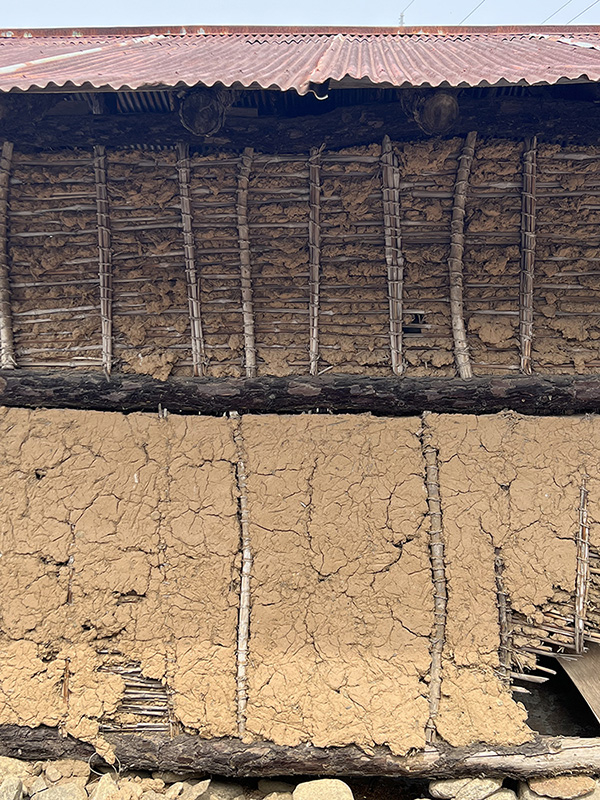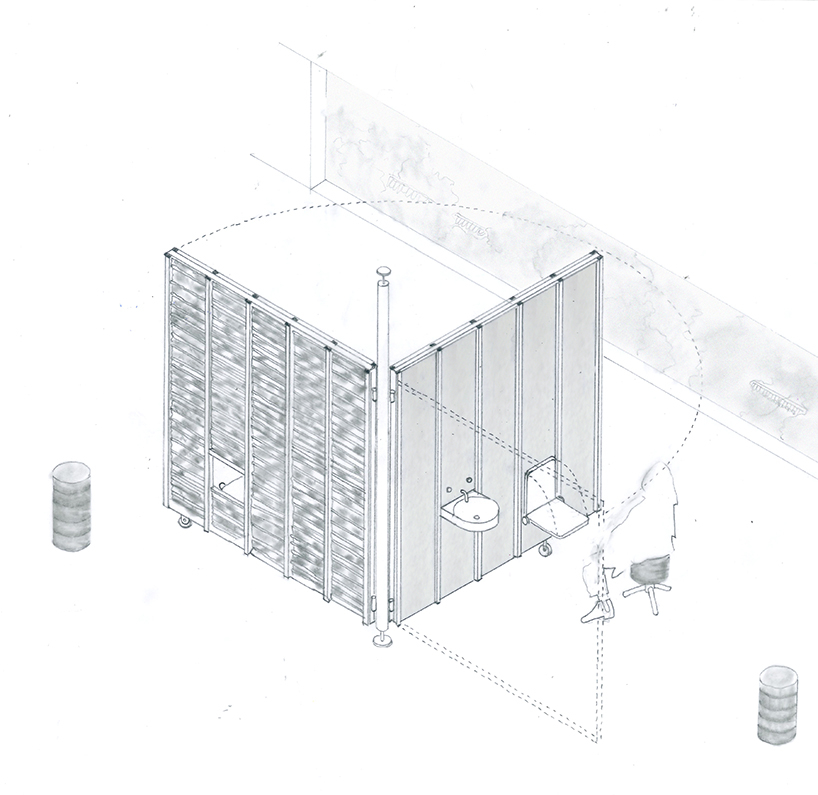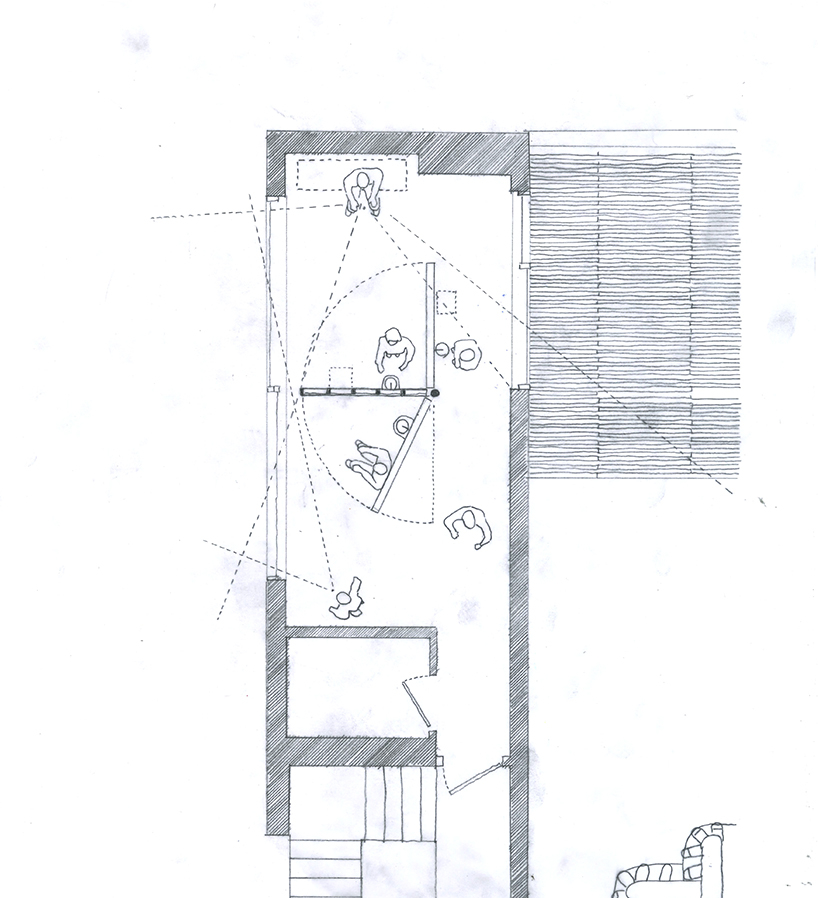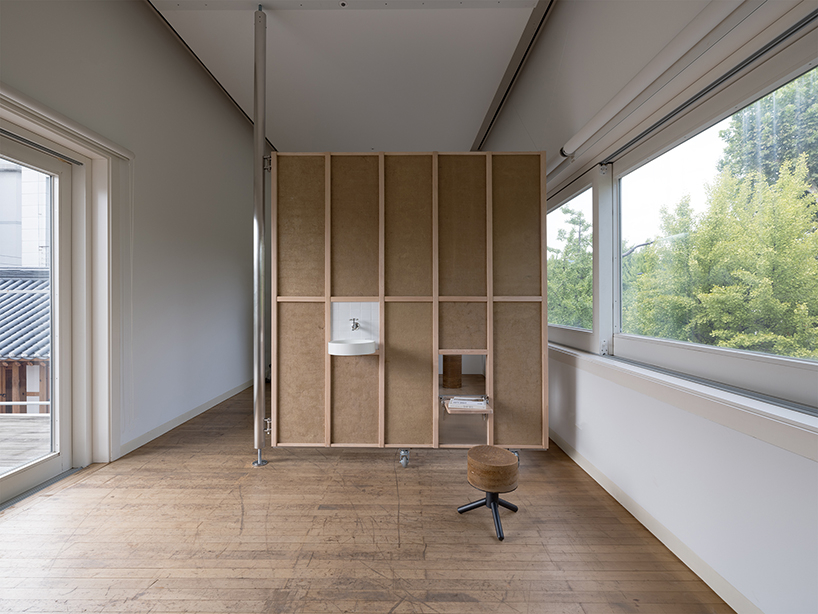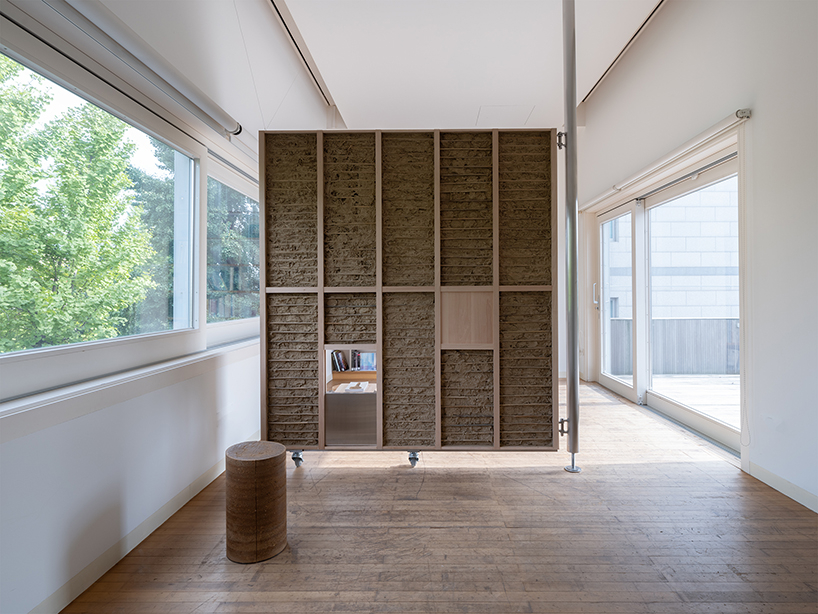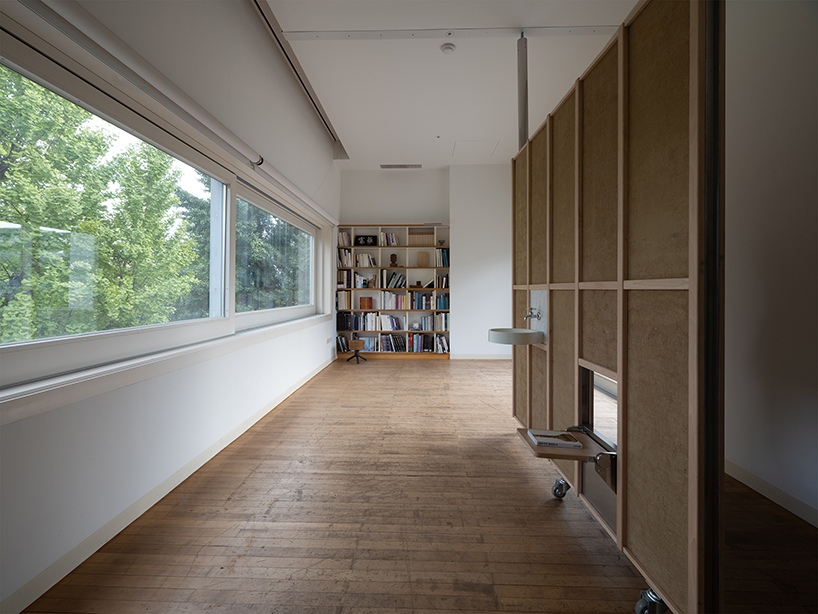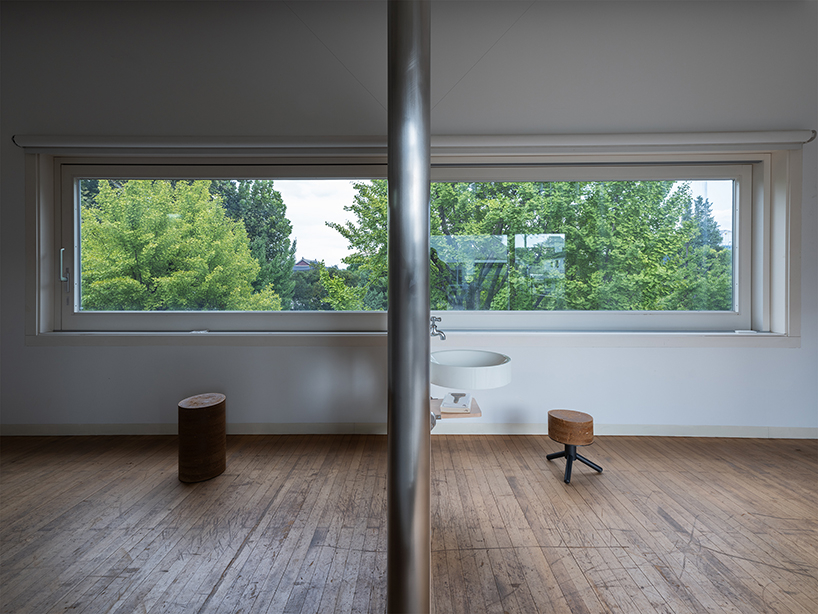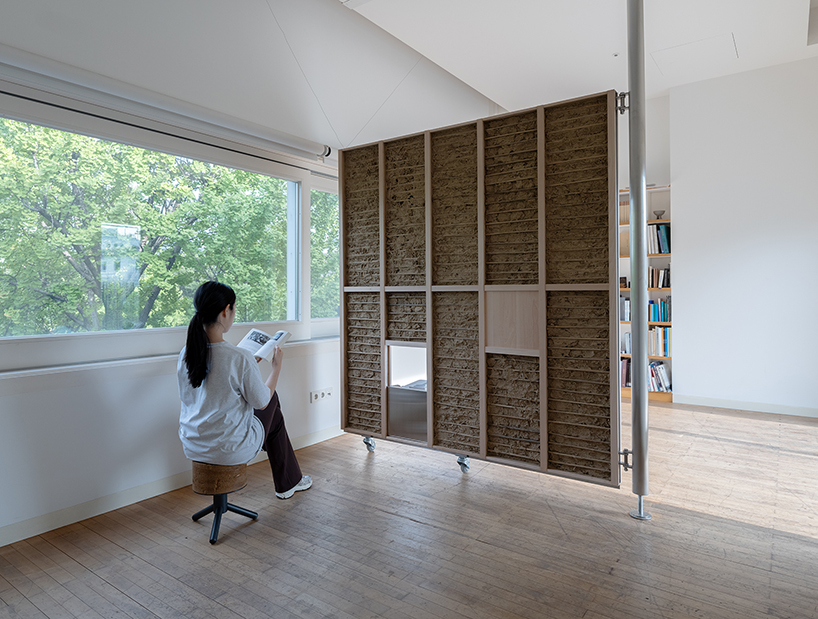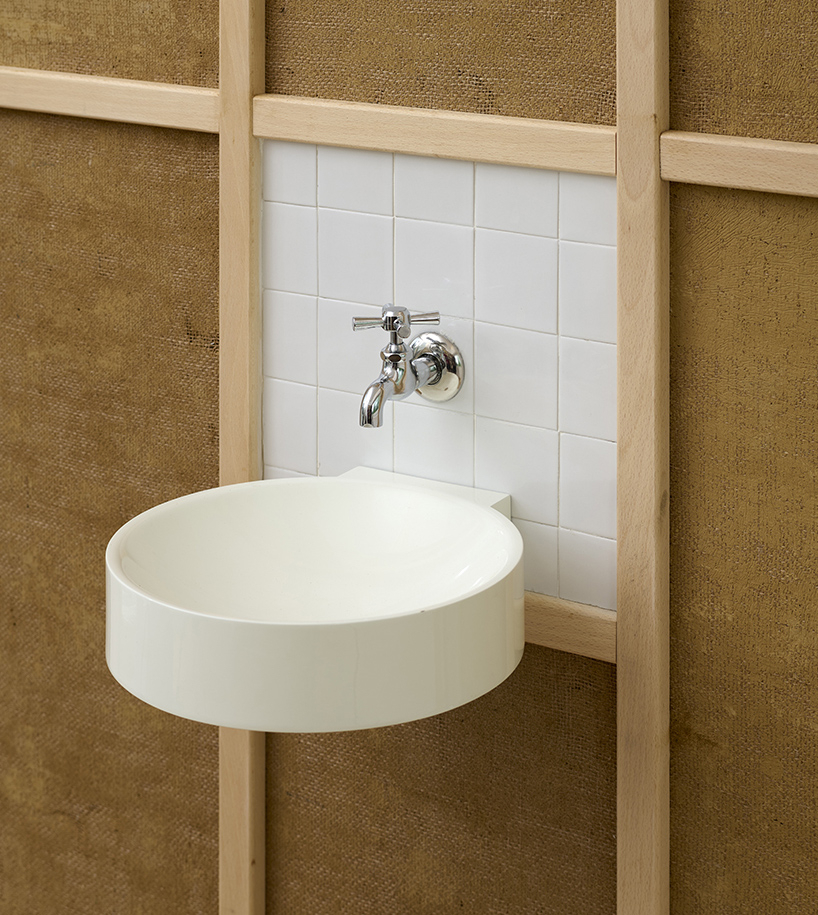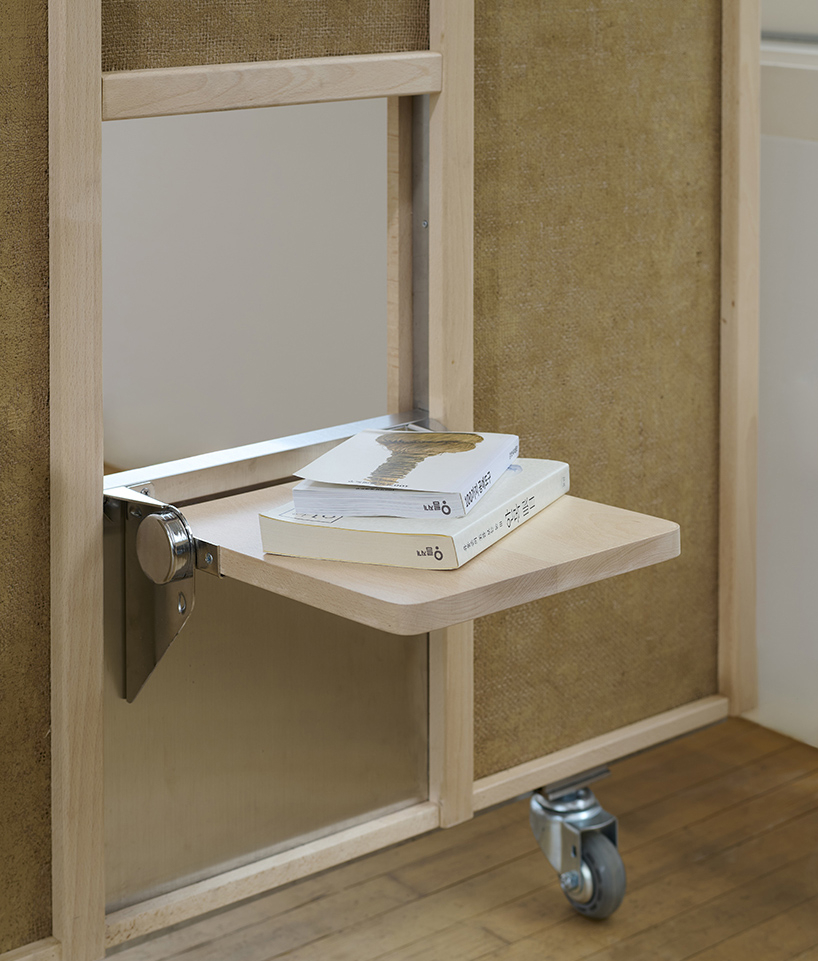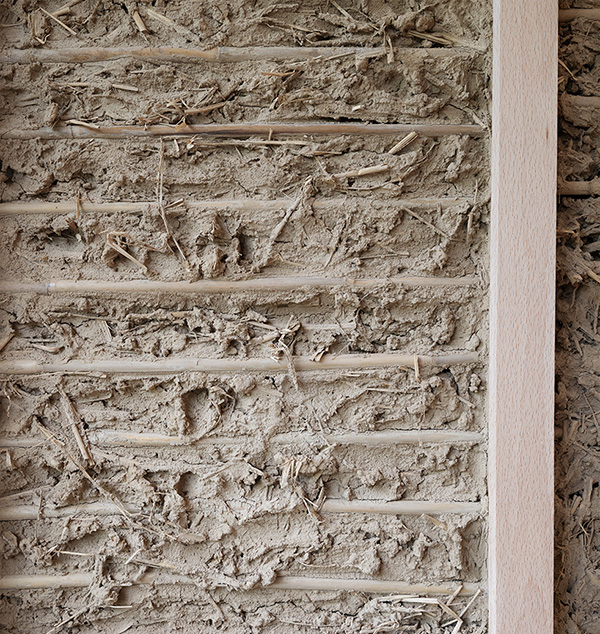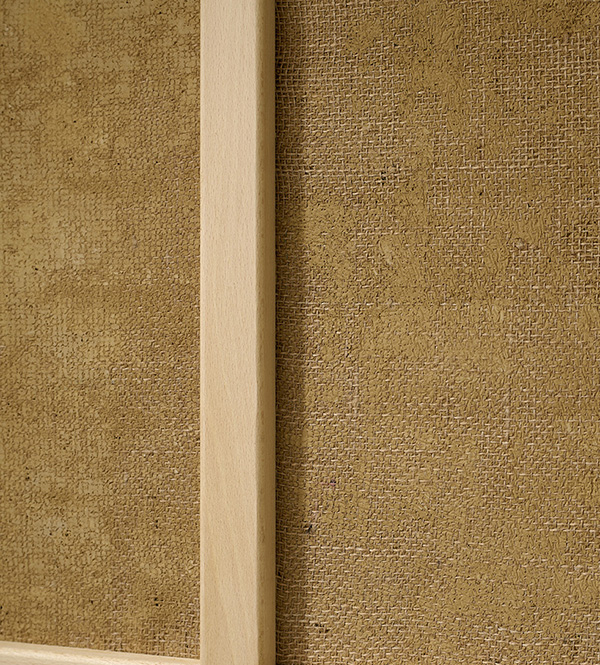공간 감지 인스트러먼트 / Sensing Instrument 2024
아름지기 기획전 '방 스스로 그러한' / Arumjigi exhibition 'Room, As It Is' 2024
‘황토로 만든 한국 전통의 목조심벽은 세월을 견딜 수 없다?’
‘한국의 흙과 대나무로 만든 전통적인 마감재는 현대인들의 생활공간에 활용되기에는 부적합하다?’
흙, 대나무, 볏짚으로 만들어진 한국 전통의 목조심벽은 산업화된 재료로 마감된 현대적인 내부공간으로 시각, 후각 그리고 촉각으로 경험되는 ‘자연’을 불러온다. 제안된 흙벽에 설치된 세면대와 접이식 벤치는 전통의 소재들이 현대적 일상 생활의 유용한 배경이 될 수 있음을 상기한다. 숙련된 장인들과 함께 전통의 마감 공법을 연구해 모듈화된 목조심벽 패널을 만들어 내려는 이번 시도는, 잊혀진 전통 흙벽이 현대적인 내부공간에는 적합하지 않은 재료라는 선입견에 대한 구제적인 대응이 될 수 있다. 또한 지속가능성의 관점에서 산업폐기물을 생산하지 않는 흙의 가능성을 탐구한다.
아름지기 사옥의 3층 전시공간은 한쪽으로 경복궁의 풍경을 파노라마로 들여오고, 반대쪽으로 한옥이 앉아있는 중정의 풍경을 빌려온다. 이런 외부 풍경을 내부로 빌려오는 방식은 한국 전통건축이 주변 풍경을 마주하는 방식과 자연스럽게 연결된다 . ‘센싱 인스트러먼트(Sensing instrument)’ 는 점유자가 직접 조율하면서 더 섬세하게 공간을 경험하게 하는 건축적 장치이다. 외부로부터 받아들여진 파노라마 풍경은 사용자에 의해 조절된 내부공간의 변화에 따라 다르게 경험된다. 또한 전통 방식으로 만들어진 움직이는 목조 심벽이 불러온 ‘자연’, 즉 흙냄새와 흙의 질감이 기존 공간을 다층적이며 복합적인 개인화된 경험으로 인도한다.
Studio Heech has developed and exhibited a new partition system for modern use that utilizes the old Korean traditional wattle and daub method. For the exhibition ‘Room, As It Is’ at Arumjigi in Seoul, the traditional Korean wattle and daub walls Studio Heech created bring ‘nature’ into modern interior space.
Amist spaces homogenised by industrialised materials, tradidional Korean wattle and daub walls made of earth, clay, bamboo and straw bring ‘nature’ into modern interior space through, sight, smell and tactile experience. A 3d printed washbasin and folding bench installed on these walls remind us of how traditional maerials can be meaningful backdrops for contemporary daily life. This attempt to investigate into traditional materials with skilled craftmen to create modular wattle and daub wall panels is a response to the misconception that old traditional wattle and daub walls are unsuitable for contemporary daily life. Moreover, it also explores the potential of earth as a sustainable material that does not generate industrial waste.
The exhibition space of the Arumjigi building takes in a panoramic landscpae of Gyeongbokgung Palace on one side, and borrows the view of the courtyard where the Korean traditional house ‘Hanok’ sits on the other side. This method of borrowing landscape outside to the interior space naturally connects to the way traditional Korean architecture faces the surrounding landscape. Sensing Instrument is a spatial device allowing occupants to subtly tailor their experience of the space. The panoramic view borrowed from the outside is experienced differently depending on the changes in the space controoled by the occupants.
In addition, the earthy scent and texture evoked by the traditional wattle and daub walls contribute to a layered, intricate and personalised spatial experience.
